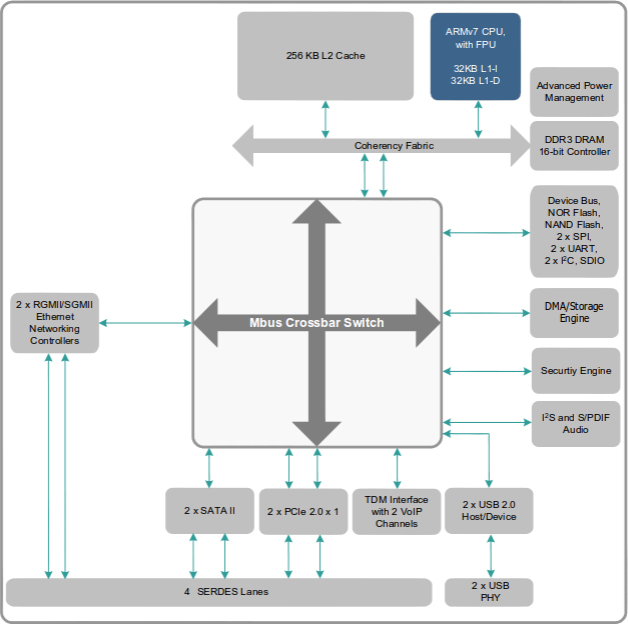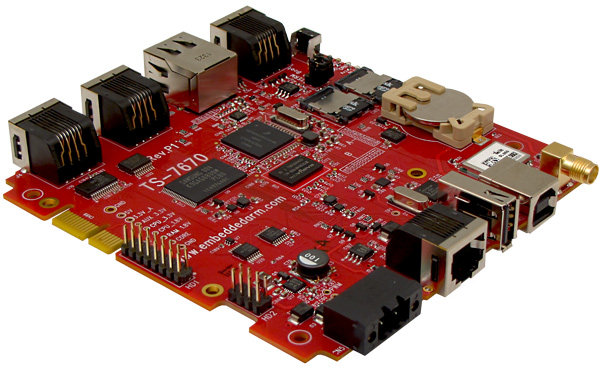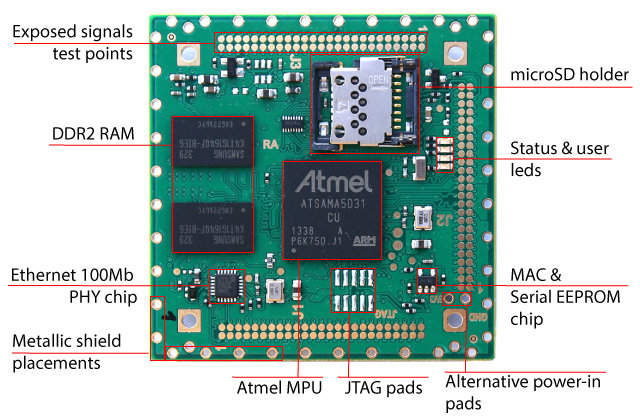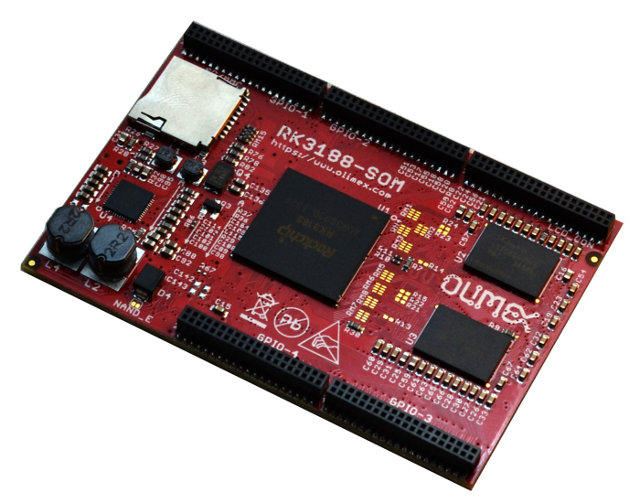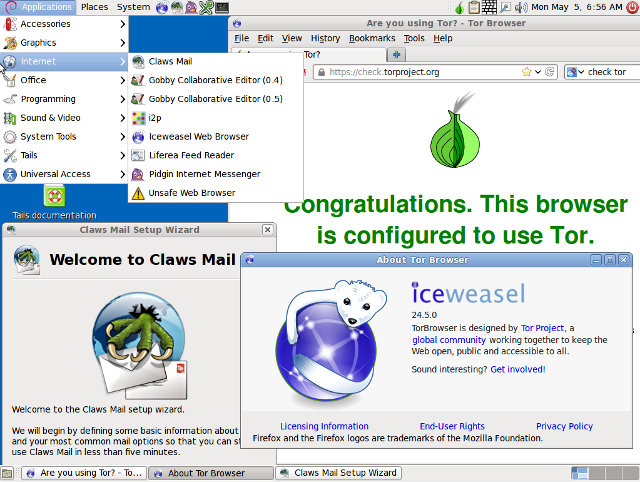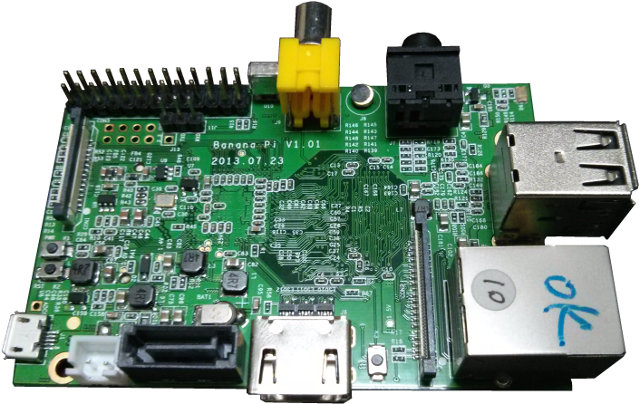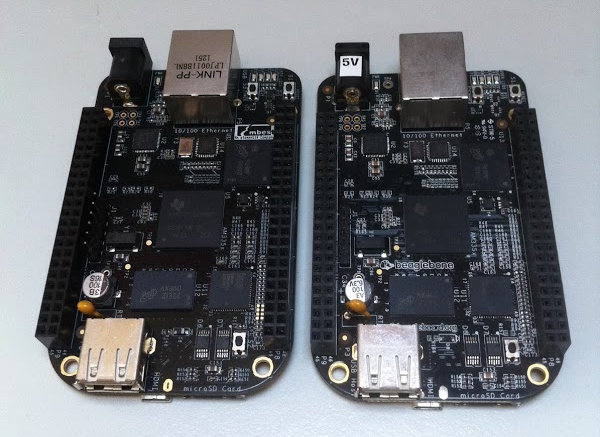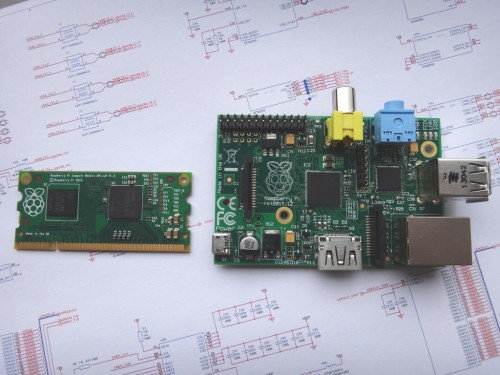Free Electrons has been working on porting several ARM SoC to the Linux kernel (mainline), including Marvell XP and 370 SoCs, and they’ve been informed by Marvell that the company finally released Marvell Armada 370 processor publicly without requiring NDA nor registration. Marvell Armada XP dual and quad core processors datasheet found in higher-end NAS and cloud servers has not been released (yet), but we’ve been told many peripheral blocks are very similar, so Marvell Armada 370 datasheet can also be used for Armada XP processors to some extend. Two documents have actually been released for Marvell Armada 370: the functional specification and the hardware specification (datasheet). The first document is actually the one with the most information with 1148 pages providing details about peripherals, against 164 pages for the latter providing details about pins and electrical characteristics. So we’ve got an ARM SoC with mainline kernel support, and decent […]
Technologic Systems TS-7670 Industrial Board Features Freescale i.MX286, Supports RAID-like System on SD Cards
Technologic Systems has unveiled an industrial board powered by Freescale i.MX286 ARM9 processor and a MCU part of NXP LPC1100 Cortex M0 series to to create a CDC ACM serial device on a host PC, and interfaces via UART, I2C, and SPI with the Freescale processor. The board targets applications such as fleet vehicle or asset tracking, point-of-sales (PoS), vending machines, data acquisition units, and data recorder modules. TS-7670 specifications: Processor – Freescale i.MX286 (1x ARM926EJ-S core @ up to 454MHz) MCU – NXP LPC Cortex M0 MCU in QFN32 package (LPC1114??) System Memory – 128MB to 256MB DDR2 RAM Storage – 2GB soldered NAND flash, 2x microSD slot with Doublestore support (similar RAID on SD card) Connectivity – 10/100 Ethernet port Wireless – Optional Telit Jupiter series multi-constellation GPS; optional CDMA, GPRS, or HSPA+ modules USB – USB host port, USB OTG port Other I/Os: 2x RS-232/interfaces (optional TTL […]
Acme Systems Acqua A5 is a System-on-Module Powered by Atmel SAMA5D3 Processor
Acme Systems has announced availability of their Acqua A5 SoM with Atmel SAMA5D31 Cortex A5 micro-processor, up to 512 MB RAM, up to 256 MB Flash, a serial EEPROM, a micro SD card slot, and an Ethernet PHY. The module targets headless or LCD based system such as automation or control panels, and is available in commercial and extended temperature range. Specifications: Processor – Atmel SAMA5D31 ARM Cortex-A5 MPU @ 536MHz System Memory – 256MByte DDR2 RAM @ 32 bit (optionally 512MB) Storage Embedded micro SD hinge type holder for OS and data Optional 256 MB NAND flash Atmel AT24MAC402 – 2Kbit serial EEPROM Connectivity – 10/100 Mbit Ethernet I/F (can be turned off for power saving) Three USB Host ports (one configurable as USB device) Connectors – 3x 50-pin connectors pitch 1.27 mm (50 mils) Signal accessible via connectors: (Check pinout for details) 10/100 Mbit Ethernet phy RGB I/F […]
Olimex Showcases RK3188-SOM Module and RK3188-EVB Evaluation Board
After launching AllWinner and Texas Instruments SoMs earlier this month, Olimex appears to be on a roll, and the company showed some working prototypes of their upcoming Rockchip RK3188 quad core ARM Cortex A9 system-on-module, and corresponding evaluation board called RK3188-SOM-EVB including both a baseboard and a SoM. Preliminary specifications for RK3188-SOM: SoC – Rockchip RK3188 quad core ARM Cortex A9 @ 1.6Ghz with Mali-400 MP4 CPU System memory – 1GB DDR3 Storage – micro SD card slot, and optional 4GB NAND flash Power Management IC Debugging – debug UART console Misc – 2x buttons, 3x status LEDs Connectors – 5 GPIO connectors 2×20 pins 0.05″ step There will be two models: RK3188-SOM and RK3188-SOM-4GB, the latter adding 4GB NAND Flash. Both will be available in June for respectively 40 and 45 Euros per piece for 1k orders. For development and evaluation purpose, the company will also provide an open source hardware base board, RK3188-SOM-EVB, […]
A Quick Test Drive of Tails, a Privacy Focused Linux Distribution
Tails (The Amnesic Incognito Live System) is a Linux distribution that allows you to use the Internet anonymously and circumvent censorship via the Tor network. It leaves no trace, and is said to use “state-of-the-art” cryptographic tools to encrypt files, emails and instant messages. It’s distributed as a live image that boots from a DVD drive, a USB stick, or an SD card. Tails v1.0 has recently been released. so let’s give it a quick try. Tails is currently only available for x86 (32-bit), no ARM image yet. The source code is available via a git repo. Let’s download the ISO image (mirror), and signature. Alternatively you can download both via BitTorrent. To make sure the image is not compromised it’s recommend to verify the integrity of the ISO image with the signature we’ve just downloaded. You’ll also need a signing key The are several methods, but I’ve opened a terminal, […]
Banana Pi is a Raspberry Pi Compatible Board fitted with an AllWinner A20 SoC
So you’ve got a Raspberry Pi board, an enclosure, and a few add-on boards. Your application would however do with some more processing power, or you’d like to run Android, but you don’t want to have to purchase accessories all over again for another board. Banana Pi could be the solution, as it’s apparently [Update: it’s not. See comments] mechanically and electrically compatible with the Raspberry Pi, and comes with a dual core Cortex A7 AllWinner A20 SoC with 1GB RAM, a Gigabit Ethernet port, and a SATA port, among other things. The board does indeed look familiar, with all external connectors at the exact same positions, but the hardware specs are fairly different: SoC- Allwinner A20 dual core Cortex A7 processor @ 1 GHz with Mali-400MP2 GPU System Memory – 1 GB RAM Storage – SD card slot, SATA connector Video output – HDMI, Composite, and LVDS/RGB Audio I/O […]
BeagleBone Black Gets 4GB Flash, a Price Increase, and Better Availability
The BeagleBone Black has been launched about a year ago, and this low cost ARM Linux board has become pretty popular with hobbyists, robotics courses at universities, and even people making products. The downside is that it has been difficult for CircuitCo, the manufacturer, to keep producing enough boards to match the demand while keeping the price at a low $45 with very little margin, and there are currently about 150,000 boards on distributor back-orders. To improve availability, Beagleboard.org has announced Revision C of the BeagleBone Black with a 4 GB eMMC, which may be easier to source over time than the original 2 GB eMMC, and that will sell for about $5 to $15 more than the previous version, or between $50 and $60. The rest of the hardware specifications remain identical. There’s also a change on the software side, as the board will be pre-loaded with Debian, instead […]
Raspberry Pi Compute Module is a $30 Raspberry Pi Compatible System-on-Module
Albeit the initial goal of the Raspberry Pi board was to address computer science education, it has become extremely popular with hobbyists, has made its way in many different kinds of hardware, and is now clearly the number 1 low cost ARM Linux development board. The Raspberry Pi foundation has then decided to design and sell a system-on-module called Raspberry Pi Compute that people can use in actual products. Since the module will be mostly software compatible with the original Raspberry Pi board, the specs are similar: SoC – Broadcom BCM2835 ARM 11 processor @ 700 MHz with Videocore IV GPU System Memory – 512MB RAM Storage – 4GB eMMC Flash SoM Connector – DDR2 200-pins SODIMM Dimensions – 67.6x30mm board which fits into a standard DDR2 SODIMM connector The main difference is they’ve replaced the SD card slot found in the board, by an eMMC module which is more […]


